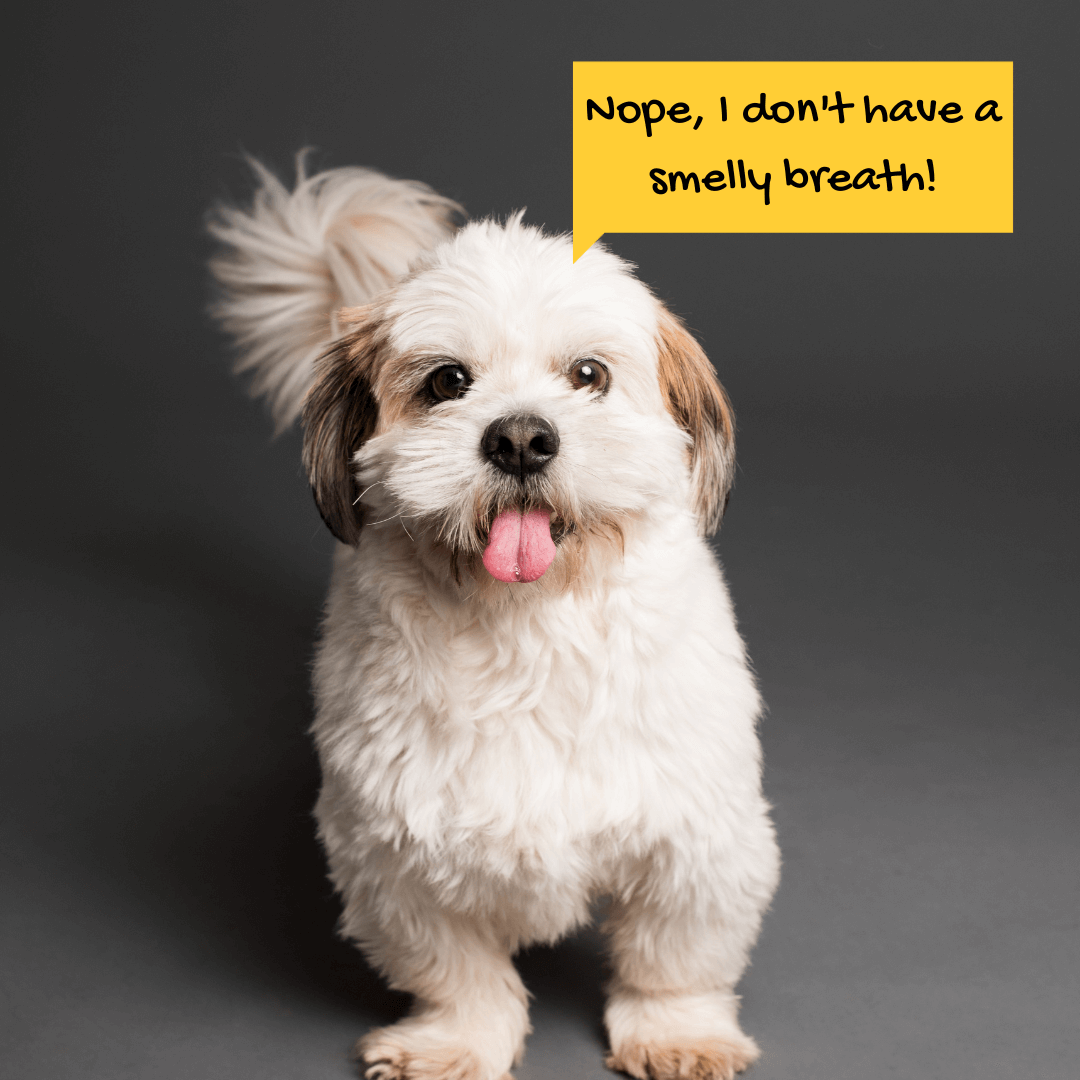No smelly breath for me, Dad!

We brush our teeth every day, not only to have a minty fresh breath but also to minimise the risk of dental diseases. So why not do the same for your furry friends?
Tooth decay in pets is caused by many factors but one of the most prominent reasons is due to a lack of dental care and hygiene. Although there’s no guarantee that there won’t be any issues with your pets’ teeth if you don’t brush them every day, the chances may be minimised.
Unfortunately, there are dog breeds that are more prone to have dental issues. These breeds are predominantly small breeds (Poodles, Yorkshire Terriers and Chihuahuas) and dogs with flatter facial design (Boxers, Bulldogs, French Bulldogs and Shih Tzus).
We can only do the best we can from our side to try and help prevent dental decay but remember that a regular visit to your Vet could also help in identifying potential issues and may help prevent issues creeping up.
Below are a few tips from the Petinsurance.com.au team to try to help keep your dog’s teeth healthy:
Brush their teeth daily
Brushing their teeth daily may help keep harmful bacteria from building up on their teeth and gums. Bacteria that cause periodontal disease can build up in less than 24 hours therefore it is recommended to stick to a daily routine. Remember to use toothpaste that is specifically for dogs, as human toothpaste could be harmful to your dog. It helps if you start this process when they are still pups so that they are more likely to get used to the feel, smell and taste of it.
Regular Vet visits
It is important to take your dog for regular vet visits as teeth issues may not only lead to weakened teeth and issues eating, but it may also lead to other health issues. Dental care for your dog is not a luxury but a very important aspect of their overall healthcare.
Give them a balanced diet!
If you are feeding your dog only soft food, try incorporating some dry food as it helps to scrape away plague and tartar as they eat. Soft food stick to teeth which could cause plaque build up faster. If you feel unsure, you can speak to your Vet regarding a balanced diet for your dog for optimal oral health.
Treat away
There is a choice of dog treats at your local shop or Vet that is designed to help keep dog’s teeth and gums cleaner, be on the lookout for them! Some toys are also designed to be non-abrasive which also helps keep your dog’s teeth healthier.
If you have a dog that doesn’t like the idea of their teeth being brushed and hides away or squirm when the brush comes out, we’ve got your back! Below see a few tricks from the Petinsurance.com.au team that might help getting them onboard:
Reward and release cues
To be able to get your dog to perform a behaviour they need to be trained. This can be done by rewarding them when they perform the right behaviour and giving a release cue when they can relax and don’t need to perform the behaviour any longer. This could be as simple as giving them a treat once you have brushed their teeth and letting them go when they know they are done with brushing their teeth.
Positive connection
Some dogs might not like strange objects, tastes or smells, so introduce them slowly. When you introduce them to the toothbrush and toothpaste remember to continuously praise them so that they start having a positive connection to it.
Routine is key.
Incorporate the brushing of the teeth as a daily routine. Brushing teeth before bedtime after their last meal is recommended. By adding this to their daily routine, it will help them get used to this being part of their everyday schedule.
Use your finger to start off with
Getting used to the new routine, taste and brush all at the same time might be a bit too much for some of our furry friends. In the beginning, you could use your finger without toothpaste. Once your furbaby is used to your finger touching their teeth in their mouth, you can step it up to finger with toothpaste and then introduce the toothbrush at a later stage.
Do it in bite sizes – excuse the pun 😊
If you feel like it is too stressful for both of you if you do the whole mouth in one sitting, break it up in sessions. Perhaps do the bottom teeth in the morning and the top teeth in the evening until you and your pup get used to the idea.
We love our pet dogs and want only the best for them and if that means putting in a bit more effort to give them good dental care, then that is what we should do!
